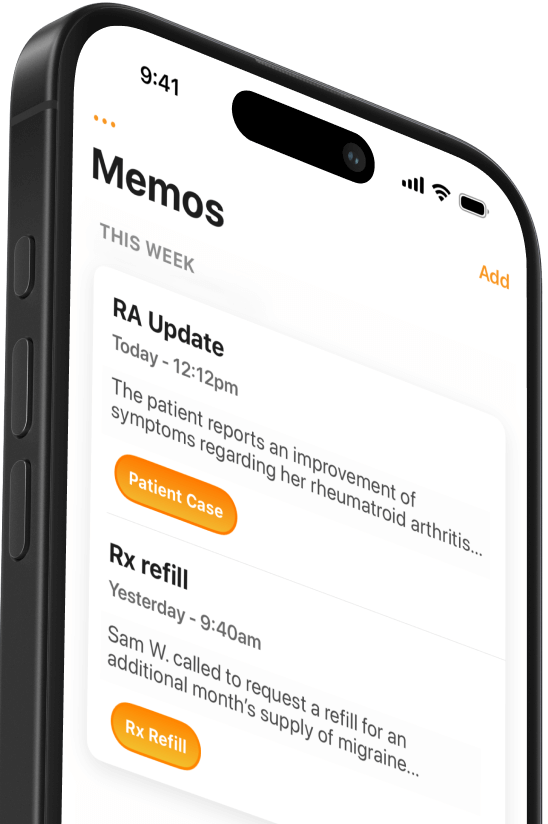What is home-based primary care?
Home-based primary care brings doctors to patients, targeting those with complex conditions. It reduces ER visits and overall costs.


Popular articles
Home-based primary care (HBPC) is a healthcare model in which the practitioner travels to the patient. Commonly called “house calls,” HBPC targets the most complex and costliest patients in society.
House calls were nearly extinct by the end of the 20th century, but they have recently become more common. This article gives an overview of home-based primary care and the factors leading to it’s resurgence.
Why practice home-based primary care?
Chronic medical conditions often worsen with age. The result is that many patients suffer from functional impairments that make it hard for them to access medical care. This challenge is even larger for those with little financial means or social support such as a family member to take them to appointments.
Home-based primary care provides a way for these patients to receive comprehensive medical and social care in their homes. When a physician, nurse practitioner or physician’s assistant visits the home, patients are less likely to need emergency remove visits, acute hospitalizations and institutionalizations.
There are a few major benefits of house calls for patients and providers:
- By reducing hospitalizations and ER visits, HBPC can reduce overall healthcare costs.
- Visiting patients at home changes the power dynamic between patient and practitioner. These types of visits often leave patients feeling more connected to their care team.
- Operating in the home gives providers a chance to learn more about a patient and how to keep them healthy. For example, physicians can note how patients store their medications, if stressful living conditions are present, whether there’s food in the refrigerator, or whether patients are navigating fall hazards.
The resurgence of house calls
HBPC is making a comeback in the US. In 1930 nearly 40% of all medical care took place in the home. By 1950 that number dropped to 10%. By 1980 just 0.6% of medical visits were house calls.
As Schuchman et al. write in the journal Geriatrics, house calls declined for three main reasons: changing technology, fear of liability and poor reimbursement. As modern lab equipment, X-rays and ultrasounds set a new standard for care, it made less sense for physicians to visit patients in their home.
However, in the last two decades house calls are making a comeback. In 2016 healthcare practitioners made 2.2 million house calls, up from under a million in 1996. 2016 also saw an additional 3.2 million visits to assisted living facilities and group homes.
Factors behind the increase in home-based primary care
Researchers point to four main factors behind the resurgence of home-based primary care.
1. Americans are aging
People over 85 years of age are the fastest growing American demographic. About half this population needs assistance with at least one activity of daily living (such as personal hygiene, dressing, eating, or mobility). In 2011, 2 million individuals were homebound, and this number is expected to double in the next twenty years.
2. Federal rebalancing legislation
The federal government recently passed two programs to encourage patients to stay at home and reduce nursing home placements. Authorized in 2005 and 2010, the programs provide financial and practical support to keep patients at home and help patients in nursing homes return to their communities. This increase in government dollars has meant more patients are at home, therefore increasing demand for HBPC.
3. A move to value based care
US health care reform is changing reimbursements to incentivize value over volume. HBPC often serves patient with the most complex and costliest conditions. These individuals are typically among the costliest 5% of patients whose care accounts for 50% of all healthcare spending. Physician house calls have been shown to reduce hospital readmissions by 25-50%.
4. Cost savings of home-based primary care
Research repeatedly reveals the value of house calls for patients and the overall health system. A few notable findings include:
- In one program, house calls by nurse practitioners cut health care costs by half and reduced 90 and 180-day readmissions by over 50%.
- A Department of Veterans Affairs HBPC program lead to 13% cost savings overall. House calls saved $6,000 per veteran and reduced Medicare costs for this group by 10%.
- Patients in Washington DC who received care from a team-based medical house call program had 17% lower Medicare costs than similar patients not in the program. This translated to $8,400 savings per beneficiary and total savings of $6.1 million.
The above factors are creating new demand for home-based primary care.
Healthcare has also gradually addressed the three major challenges - technology, liability and reimbursement - that made HBPC less popular late in the 1900s. New technology like electronic medical records and point of care testing make it convenient and efficient to provide and document care in patients’ homes.
Further reading
This article synthesizes 2018 research published in the journal Geriatrics. Read the published research for more details. Physicians and other healthcare professionals who are providing home-based primary care may also enjoy these articles:
- Are physician house calls making a comeback?
- Benefits of house calls for patients and providers
- How to bill for a house call visit
- 7 ways to easily document house call visits on the go
http://45.33.12.216/blog/2019/12/7-ways-to-easily-document-house-call-visits-on-the-go/
Related Articles


We Get Doctors Home on Time.
Contact us
We proudly offer enterprise-ready solutions for large clinical practices and hospitals.
Whether you’re looking for a universal dictation platform or want to improve the documentation efficiency of your workforce, we’re here to help.



